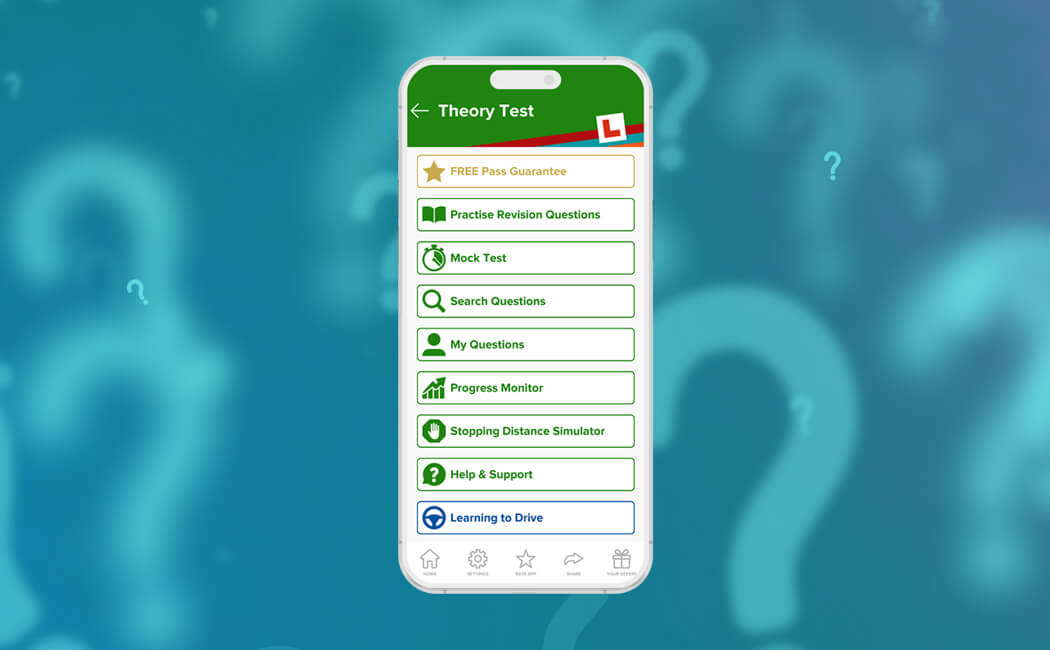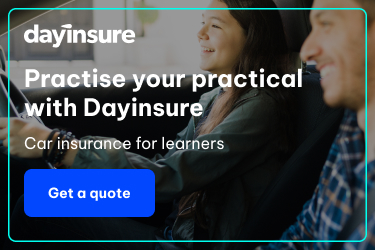What are the ten toughest driving Theory Test questions?

If you are currently working your way through our 4 in 1 app you will know how tricky some of the test questions are. We thought it would be helpful to dive into our data banks and work out what Theory Test questions our users flagged as the most difficult.
Fasten your seatbelts and get ready to boss your Theory Mock Test! Let’s go hardest to the easiest…
- When driving a car fitted with automatic transmission, what would you use ‘kick-down’ for?Answer: Quick acceleration.
Explanation: ‘Kick-down’ selects a lower gear, enabling the vehicle to accelerate faster. - You’re turning right onto a dual carriageway. What should you do before emerging?Answer: Check that the central reservation is wide enough for your vehicle.
Explanation: Before emerging right onto a dual carriageway, make sure that the central reservation is deep enough to protect your vehicle. If it isn’t, you should treat the dual carriageway as one road and check that it’s clear in both directions before pulling out. - What is a cover note?Answer: A document issued before you receive your insurance certificate.
Explanation: Sometimes an insurance company will issue a temporary insurance certificate called a cover note. It gives you the same insurance cover as your certificate but lasts for a limited period, usually one month. - For how long is a Statutory Off-Road Notification (SORN) valid?Answer: Until the vehicle is taxed, sold or scrapped.
Explanation: A SORN allows you to keep a vehicle off-road and untaxed. - You’re waiting in a traffic queue at night. How can you avoid dazzling drivers behind you?Answer: Use the parking brake only.
Explanation: If you apply your parking brake, you can take your foot off the footbrake. This will deactivate the brake lights. - What must you have when you apply to renew your vehicle tax?Answer: Valid insurance.
Explanation: You can renew your vehicle tax online, at post offices and vehicle registration offices, or by phone. When applying, make sure you have all the relevant, valid documents, including a valid MOT test certificate where applicable.
- You’ve just passed these warning lights. What hazard would you expect to see next?
Answer: A school crossing patrol.
Explanation: These lights warn that children may be crossing the road to a nearby school. Slow down so that you’re ready to stop if necessary.
- At a puffin crossing, which colour follows the green signal?
Answer: Steady amber
Explanation: Puffin crossings have infra-red sensors that detect when pedestrians are crossing and hold the red traffic signal until the crossing is clear. The use of a sensor means there’s no flashing amber phase as there is with a pelican crossing.
- Where will you see these red and white markers?
Answer: Approaching a concealed level crossing.
Explanation: If there’s a bend just before a level crossing, you may not be able to see the level-crossing barriers or waiting traffic. These signs give you an early warning that you may find these hazards just around the bend.
- Which vehicle will use a blue flashing beacon?
Answer: Bomb disposal
Explanation: If you see or hear one emergency flashing lights, move out of its way as soon as it’s safe and legal to do so.
There you have it; the top 10 questions that our app users struggle the most with! Make sure you are covering all topics when you are revising.
Don’t forget to go into ‘settings’ in your 4 in 1 app, and select ‘questions not yet seen’ and ‘questions previously answered incorrectly’ to make sure you’ve seen every question and to also nail the ones that you are getting wrong.
Good luck!


